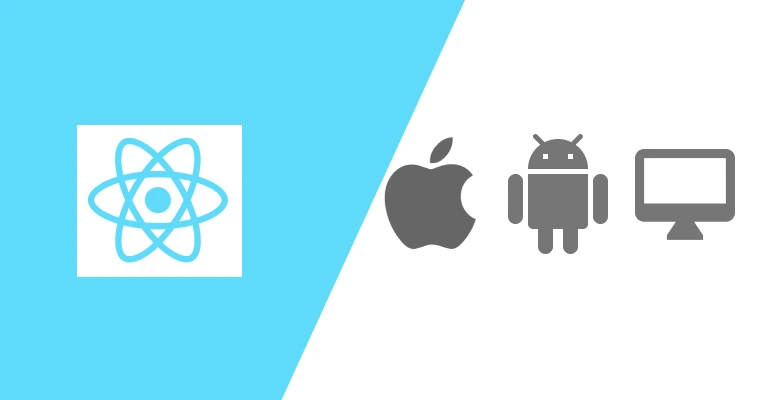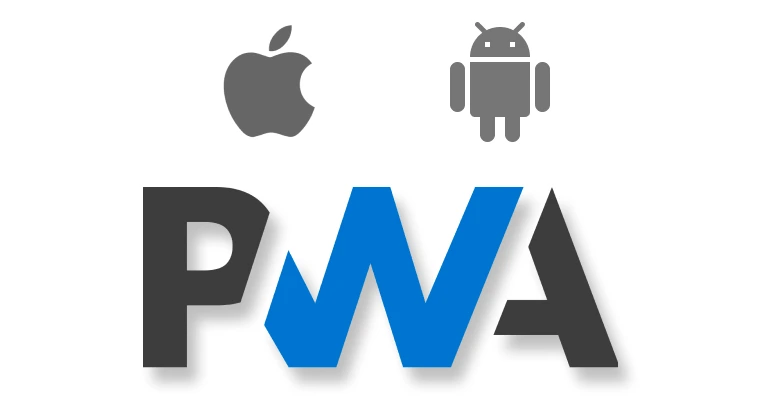The app development world is extremely dynamic with new technologies rolling out with each passing day. What was once thought to be a domain that was ruled by Native mobile apps, is now dominated by cross-platform hybrid applications that can work on any platform or operating system.
When it comes to hybrid app development, the React Native vs PWA debate is never-ending. Developers keep justifying their choice of the path by conducting a comparison between PWA vs React Native. In this blog, we’ll look at both the technologies in-depth and help you choose the best technology out of two for your next project.
Hybrid Apps & React Native

Hybrid apps are platform-independent apps that can work on any device or OS without disrupting the user experience. Developers create hybrid apps with an intention to offer cross-platform support, improve user experience, bring down development costs and offer apps a greater reach using the same resources.
React Native is one of the best platforms to start developing a hybrid app. Launched by Facebook, React Native is powered by ReactJS an open-source programming language that helps develop cross-platform apps.
React Native & ReactJS both are developed by Facebook where React Native is a framework focusing on the hierarchy of UI components and more focus on the user experience.
One of the biggest advantages of React Native is the power it gives a developer to reuse the codebase for building apps for multiple platforms, simultaneously. This means React Native empowers developers to launch apps on iOS & Android using a single codebase.
Pros of Using React Native
Component-based structure for near-native look and feel
React Native works on a component-based structure. This promises a close-to-native look, feel and experience for the end users. This means that businesses using React Native for app development can be sure about amazing UI/UX on multiple platforms with same budget.
Can be developed via single code base- maximum code reusability
Apps on React Native can be developed using a single codebase as the platform supports code reusability. This means that developers can simultaneously roll out Android & iOS versions, which increases the reach and popularity of an app.
Faster performance with native components
React Native apps can be compiled in code which is written natively. The ability of React Native apps to use native components and resource seamlessly boosts the performance of the app.
Reduced development cost and time
As the React Native framework is open source, supports code reusability, has great open libraries for components and modules, it brings down the development time and ultimately the cost of development.
Existing modules in the form of open source libraries
The React Native library comes with several amazing modules to complete development tasks more efficiently and quickly. The presence of a never-ending open source library with existing modules make it a great platform to build next-gen hybrid apps.
Cons of React Native
Steep learning curve
React Native is a new framework that is quite different from previous approaches to cross-platform development. As the framework is still new to many, existing developers need to learn new tactics and tools to make things happen. This sometimes means that developers can take time to get hold of things.
Dynamic development environment
The frequent updates to React Native framework adds new things to the development environment. This makes React Native quite dynamic. Developers have to stay updated about the latest changes and work accordingly which can sometimes be a hassle.
Evolving security parameters that needs attention
Though React Native powers several global applications and startups, there is no denying that when compared to older platforms, React Native has still a lot more to cover on security grounds. As the platform is still evolving, security parameters, too, are continuously being added, still, which can increase security concerns sometimes.
SEE ALSO: React Native Component Library
What is a Progressive Web App?

Progressive web app (PWA) is developed in a similar manner like a native app and use of traditional development stack comprising of HTML, CSS, JavaScript and other frameworks. Progressive web apps are different in approach as users don’t need to download the app for using. Instead the apps are hosted online on the web. This gives businesses the benefit of both- web and mobile.
Being a great alternative to hybrid app development, PWAs are not hardware-oriented and are easier to develop than a cross-platform or native mobile app. The flexibility of web along with the performance of a native application makes PWA a great option for app development.
Pros of Progressive Web Apps
Fast & Cost-efficient Development
Developing and launching a progressive web app is easier, quick and cost-efficient process without compromising on quality. This is because most developers are already familiar with development stack and best development strategies.
Cross-browser/Device Compatibility
As a PWA is hosted online, there is no limitation for the device, browser or operating system a user should use for accessing the app. PWA apps can be used on any internet connected device or any browser.
Automatic App Updates
There is no need to manually update a PWA app as the apps get automatically updated in real time as changes are made on the development front.
No Dependency on App Stores
As PWAs are self-hosted online, one doesn’t need to be at the mercy of App Store and Play Store for approval and launch. Anyone with an internet connection can go online and use the app without downloading the same.
Cons of Progressive Web App Development
Compatibility Issues
PWA apps do not perform well on legacy devices and outdated browsers. This is because of responsiveness troubles with outdated devices and browsers. This can cause problems for your target audience as the whole point of being device-independent is defeated when your app isn’t supporting their old device.
Lack of Social Media Integration Features
As PWA apps run live online, they lack several integration capabilities such as social media support. In the age of social media connectivity, this can turn down a lot of users and affect your reach, negatively.
Fewer options of adding latest hardware compatibility support
PWA apps don’t support latest hardware innovations. This means that apps cannot be embedded with latest features like fingerprint or face scanning. Moreover, the lack of latest hardware integration capabilities affects future scalability potential.
High battery drainage on mobile devices
PWA apps run online. This means mobile devices have to deal with web code which takes more processing power to analyze and interpret. If a user is using the app on mobile device, then the battery drainage issue can turn him/her away from using the app.
Wrapping Up
Clearly, if we look at the popularity trends, advantages and disadvantages, React Native seems to be a more futuristic platform for hybrid & cross-platform app development. In the battle of React Native vs PWA, React Native seems to be winning the battle, at present.
It brings down cost of app development, increases the reach, offers a great user experience and simultaneously launch apps on multiple mobile platforms. If you believe our experts, React Native is the right option for your next development project. Though, making a platform choice depends on case to case. If you’re confused about the platform, our experts can consult you to make the right decision. Get in touch now.


